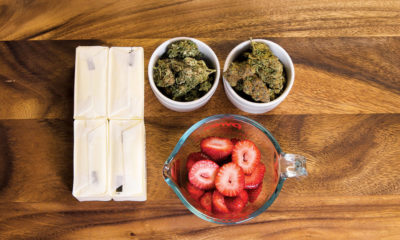Beyond THC: Cannabis as Potent Medicine
When it comes to selecting “strong cannabis,” flowers testing highest in THC aren’t the immediate answer.
Which is stronger, Granddaddy Purple or ChemDawg? Which is better, Blue Dream or OG Kush? When consulting with patients at the sales counter of the dispensary and questioned about how to find the “strongest” medicine, my answer is rarely just the strain with the greatest testing percentage.
For the past two years, I have been given the privilege of conversing with patients daily about their medicine as a sales consultant for one of the largest medical cannabis dispensaries in the nation. From growers to newbies to industry workers, watching individuals personally select medicine and then having the opportunity to ask how and why they selected it is both enlightening and frustrating.
Everybody can appreciate strength. Yet, ask an industry professional about laboratory testing of tetrahydrocannabinol (THC), which is the cannabinoid most commonly associated with strength, and many of us will act indifferent. Why? Because when it comes to selecting “strong cannabis,” flowers testing highest in THC aren’t the immediate answer.
Some might be surprised to hear that THC testing is greeted with healthy skepticism in dispensaries. Laboratory testing of cannabis emerged only recently and ever since it has created mayhem for the conversation of THC percentages in relation to specific strain attributes including which should be given more weight when it comes to selecting medicine.
Overall lab testing benefits the industry and helps it to grow closer to the professional medical model we strive to emulate. I can absolutely appreciate the role THC testing is trying to play in creating an evaluation tool to help consumers determine strength. My qualm with laboratories becoming a proxy for patients is that focusing on a single cannabinoid is too one-dimensional to reflect true medicinal value.
The question of cannabis potency can’t be answered generically based on THC percentages because cannabis strength isn’t linear. Potency is a factor of many variables: THC levels, strain attributes, cannabinoids and terpenes present, curing process and more. With all the attention testing gives to THC, it’s easy to forget to recognize the difference between raw and active medicine (THCA and THC, respectively). Or how the tops of a plant differ in THC percentage from the bottoms. It’s important to leave room to factor in how cannabis acts and affects each individual differently. This understanding alone is of quintessential importance. So, when talking about strength, it’s essential to discuss the types of strength instead.
While THC testing offers patients an easy-to-use tool, it can also mislead patients by causing them to overlook other more important qualities to buying cannabis. Many ask for strength, but it’s efficacy that we all truly seek from our medicine. True medicinal efficacy must take into account several factors and above all depends on the patient’s affliction: pain, depression, insomnia, appetite, etc. Hundreds of cannabinoids exist in the cannabis plant and each is particular in effect. The other cannabinoids can offer a significant range of relief and patients can depend on them for antispasmodic, anti-inflammatory, antiproliferative and other properties.
There’s something to be said for the power of a full-cannabinoid spectrum and the added vivacity of THC when other chemical components like terpenes are present. Terpenes, as well, are responsible parties to the nuances in feelings that are experienced. Not only do they offer a beautiful spectrum of smells and tastes, but they also bring a whole range of medicinal comfort including pain relief.
For example, the terpene Linalool is associated with tranquility and sedation. Alpha-Pinene is an anti-inflammatory known to be a bronchodilator. Various types of cannabis will contain different combinations of cannabinoids and terpenes, each individual make-up holding the potential to personalize medical recommendations based on specific patient needs.
Who decided THC was the ultimate arbitor of strength? Let’s respect the hundreds of other cannabinoids that exist in all unaltered cannabis plants. In my experience, strong cannabis consists of a rounded elixir of cannabinoids and terpenes.
Testing or no testing involved — it still boils down to knowledge of varying strain attributes. The familiarity that patients build with the varieties of cannabis is what will allow them to navigate towards needed attributes. Paying attention to the universe of strains available will offer incredible insight into the selection process.
By Maggie Kerr. Published in issue 14 of Cannabis Now. LEARN MORE.
What is your favorite cannabinoid? Tell us in the comments!
























